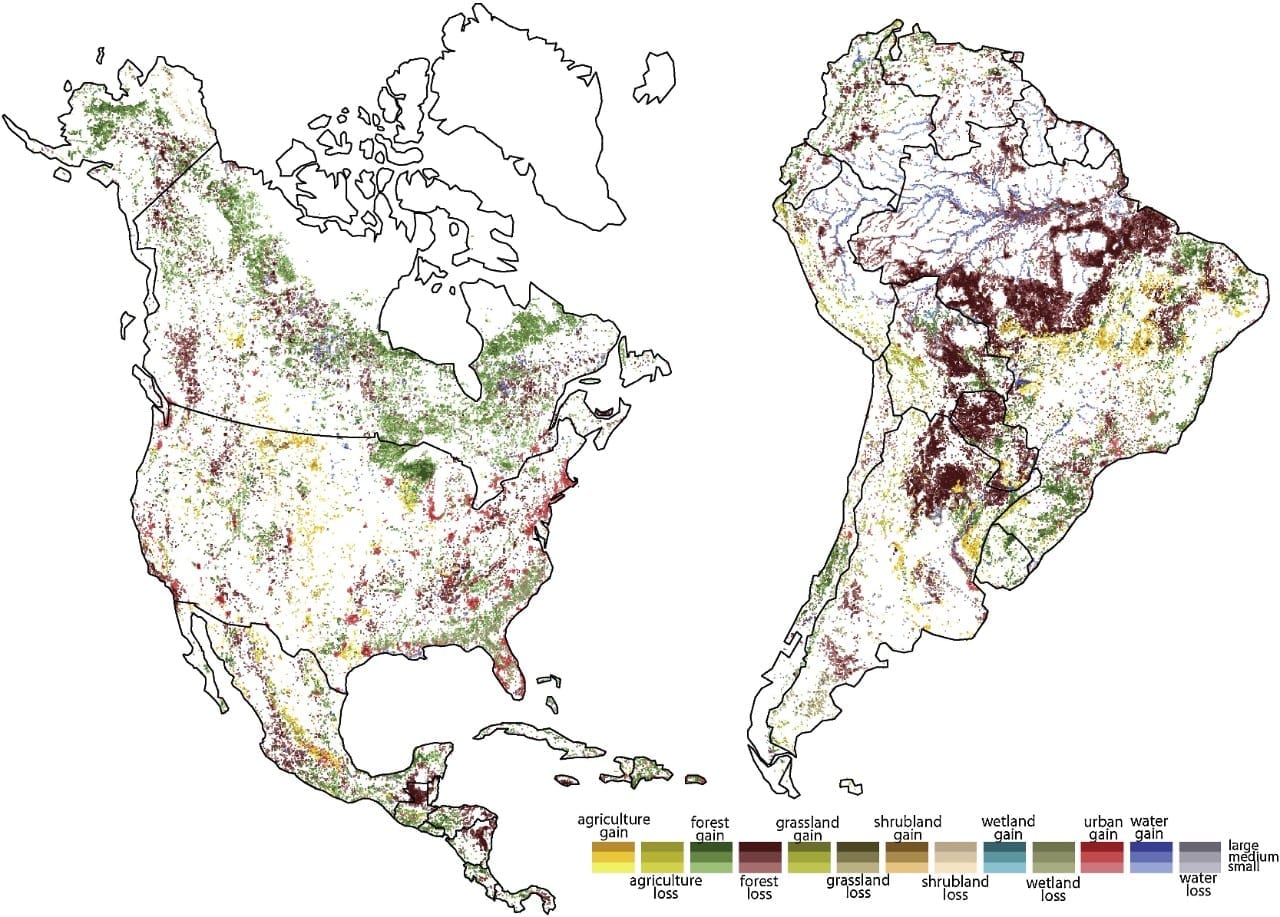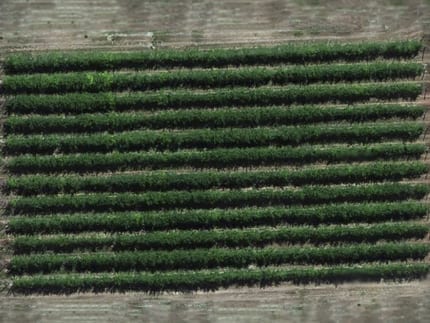UC professor Tomasz Stepinski’s land-use map shows changing landscapes in North and South America. White indicates little or no change. Darker shades indicate the highest rate of change in each category. Forest loss was the most noticeable category in Central and South America. Graphic/Tomasz Stepinski/UC
The Latest Updates from Bing News & Google News
Go deeper with Bing News on:
Deforestation
- Dirty laundry? Major clothing companies like Zara and H&M under scrutiny for allegedly fuelling deforestation in Brazil
Earthsight traced the journey of 816,000 tons of cotton from Brazil to major fashion brands. This cotton, primarily grown in the ecologically vital Cerrado savanna, allegedly leaves a path of ...
- UVM researcher studies risks brought on by deforestation
As part of Earth Week, we spoke with Bill Keeton, a UVM professor and forestry expert, who studies the impact of old-growth forests on the climate.
- Brazilian miners are caught in the crossfires of a war over deforestation
As Brazil cracks down on illegal mining in the Amazon rainforest, villagers are paying a steep price. They want the government to offer them economic alternatives.
- Cocoa growers face production shortage as EU anti-deforestation rules loom
As cocoa prices surge to record highs and Central and West African growers grapple with the impact of climate change, the cocoa sector is rushing to adapt its production to the EU anti-deforestation ...
- New tool offers potential breakthrough to hold companies accountable for deforestation: 'We need to be able to trace these'
Forests are among nature's most impressive splendors. They help store carbon and release oxygen into the air. Forests act like sponges, absorbing excess water and releasing it through its leaves.
Go deeper with Google Headlines on:
Deforestation
[google_news title=”” keyword=”deforestation” num_posts=”5″ blurb_length=”0″ show_thumb=”left”]
Go deeper with Bing News on:
Forest tipping point
- California’s insurance crisis is pushing this iconic mountain area to a tipping point
The Santa Cruz Mountains are a land of extremes. There’s the exceptional beauty — towering redwoods, sparkling creeks and neon yellow banana slugs. But there have also been walls of flames that ...
- Ivan Vukomanovic walks off into the sunset, a Blasters legend that Kerala will miss
Kerala Blasters parted ways with Ivan Vukomanovic at the end of their 2023-24 season, bringing to an end a bond perhaps few others this sporting nation - and certainly the ISL - has seen.
- Jürgen Klopp hails potential Liverpool successor Arne Slot: football news – live
Join our writers for buildup to another busy weekend of action in the Premier League, Championship and further afield ...
- Premier League chief unhappy at Club World Cup and reiterates City timeframe
Premier League’s CEO said he is unhappy with lack of Fifa consultation on the expanded tournament and said Manchester City’s 115 charges are to be resolved ‘in the near future’ ...
- Man City hearing over 115 charges in 'near future' - PL chief
The Premier League's CEO Richard Masters said on Friday that the hearing over Manchester City's 115 alleged finance breaches will take place in the "near future." ...
Go deeper with Google Headlines on:
Forest tipping point
[google_news title=”” keyword=”forest tipping point” num_posts=”5″ blurb_length=”0″ show_thumb=”left”]










